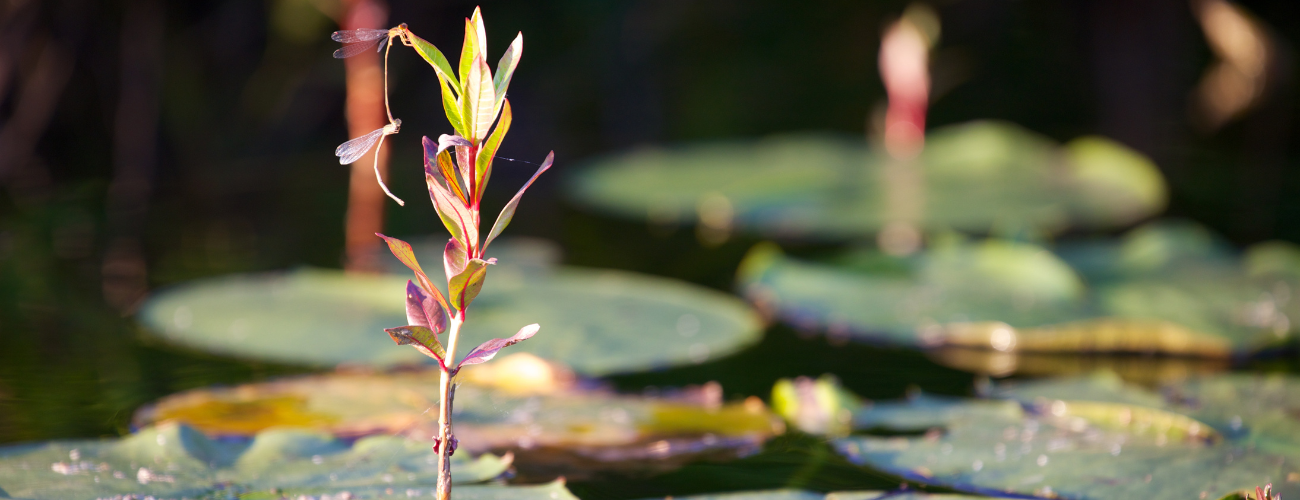Ponds in the UK can attract a diverse range of wildlife, from tiny creatures to larger mammals. Insects such as water boatmen, pond skaters, and dragonflies are commonly found around ponds and rely on the water for their life cycle. Fish can also be found in larger ponds, while frogs, toads, and newts use ponds for breeding and shelter. Birds may also visit ponds to feed on the fish and other wildlife. Mammals may use ponds as a source of water and food. Overall, a well-maintained pond can attract a diverse range of wildlife. They are an important part of the local ecosystem and the best way to attract wildlife into your garden.
There is a wide variety of pond plants available that can be grown in ponds in the UK. This article focuses on native plants. Choosing native plants where possible, is important because they are better suited to our native wildlife, as they have evolved together.
There are four main categories of pond plant: marginals, floating, deep-water and oxygenators.
Marginal plants
As the name suggests, marginal plants grow around the edges of ponds in shallow water or bog gardens. They often grow with the roots and crown underwater but the foliage emerging. They need planting in shallow water or an aquatic basket placed on a ledge or bricks. This will raise them up to the correct height. Marginal plants help a garden plant to look more natural within the landscape and create a flow between garden borders and the pond. They also provide cover and habitats for all kinds of creatures. Dragonflies for example, require tall stemmed plants for the nymphs to cling to as they change into the adult dragonflies.
Examples of native marginal plants include:
Caltha palustris (marsh marigolds)
Iris pseudacorus (water iris)
Myosotis paustris (water forget-me-not)
Mentha aquatica (water mint)
Alisma plantago-aquatica (water plantain)
Nasturtium aquaticum (watercress)
Typha angustifolia (lesser reedmace)
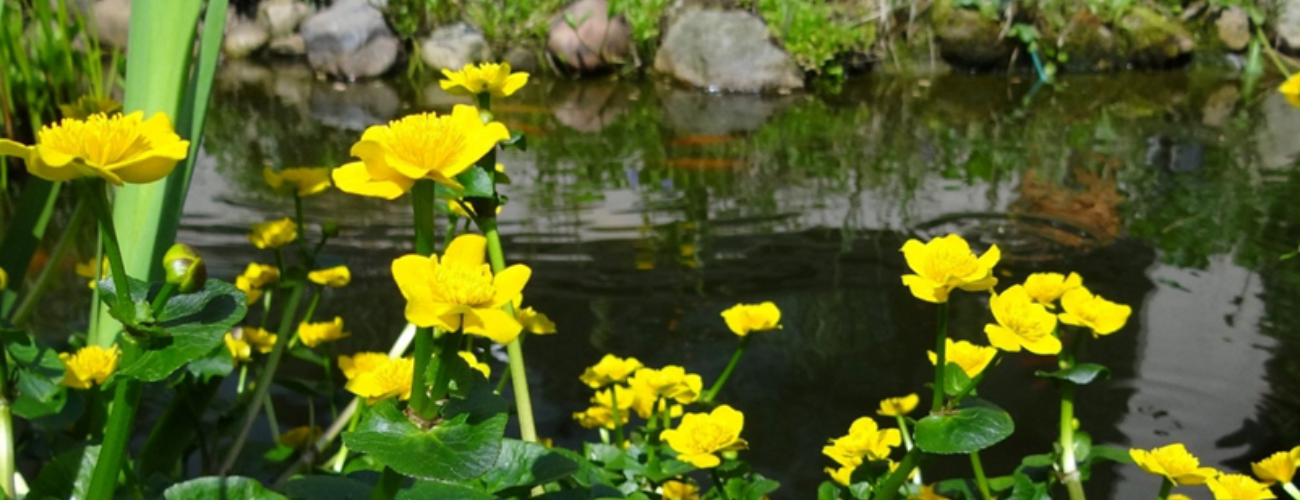
Caltha palustris, commonly known as marsh marigold, is a perennial flowering plant in the buttercup family. They have bright yellow, cup-shaped flowers that bloom in early spring and glossy heart-shaped leaves. Marsh marigolds are an important food source for early-season pollinators like bees and butterflies.
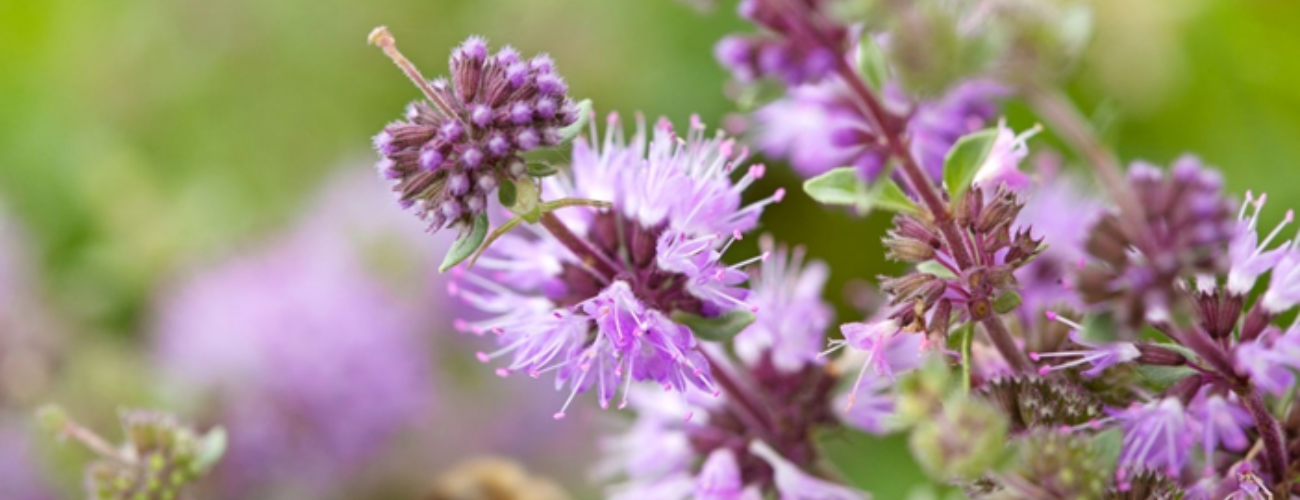
Mentha pulegium, commonly known as pennyroyal, is a plant in the mint family. It is a low-growing, creeping plant with small highly fragrant leaves. Pollinators love its fluffy purple flowers. Its strong minty aroma is said to repel insects like fleas, mosquitoes, and ants.
Floating plants
These plants float freely in the water and have no true roots to attach to the bottom of the pond. They absorb all the nutrients they need directly from the water.
Some floating plants, like Ceratophyllum demersum (hornwort), have all their finely divided foliage under the water. Plants like this act as oxygenators.
Others, like Hydrocharis morsus-ranae (frogbit), have foliage which sits on the surface of the water, like waterlilies. Floating plants are easy to add to a pond and thin out when needed. They provide cover and shade for aquatic creatures and help to reduce algal growth. It is good to keep about 50% of the surface area in a pond covered by foliage.
Other native floating plants include Stratiodtes aloides (water soldiers).
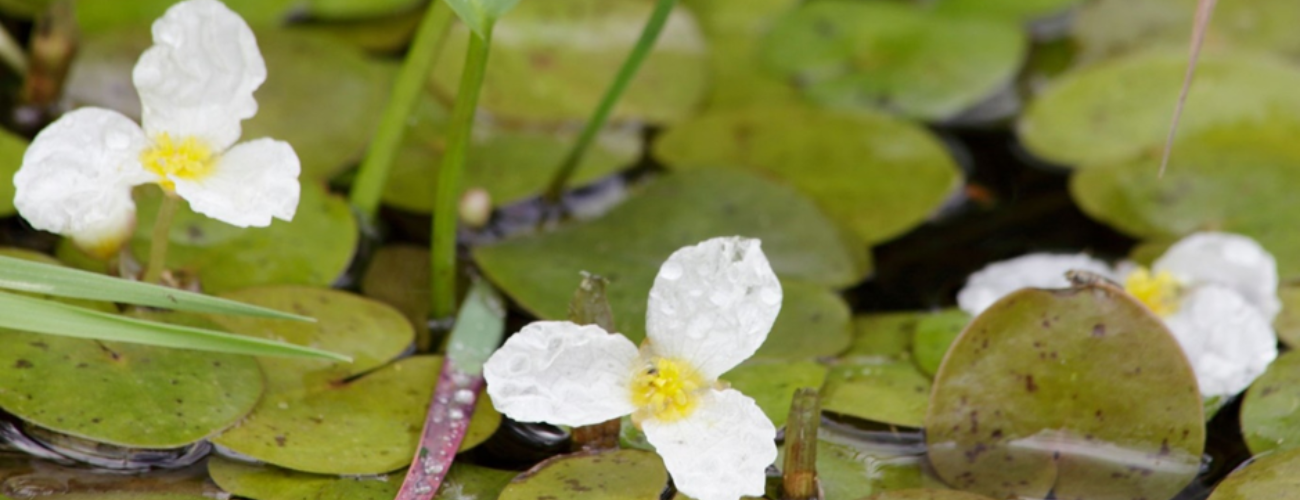
Hydrocharis morsus-ranae, commonly known as frogbit, is a small, free-floating plant that forms dense mats on the surface of ponds. It has round leaves about 1 to 3 cm in diameter and produces small, white flowers held above the water on short stalks. Frogbit is a good plant for wildlife, as it provides cover and food for a variety of aquatic animals. It is also often used in ornamental ponds. It is easy to thin out if it grows too big for its space.
Deep-water plants
Deep-water plants grow on or near the bottom of a pond. They usually need a water depth of 40cm or move above their crown. Their foliage grows up through the water, often to the surface. This provides useful stems for dragonfly larvae to crawl up from the bottom of the pond, ready for when they emerge.
Examples of native deep water plants include:
Nuphar luteum (Brandy Bottle)
Butomus umbellatus (flowering rush)
Nymphoides peltata (floating hearts)
Nymphaea alba (our only native waterlily)
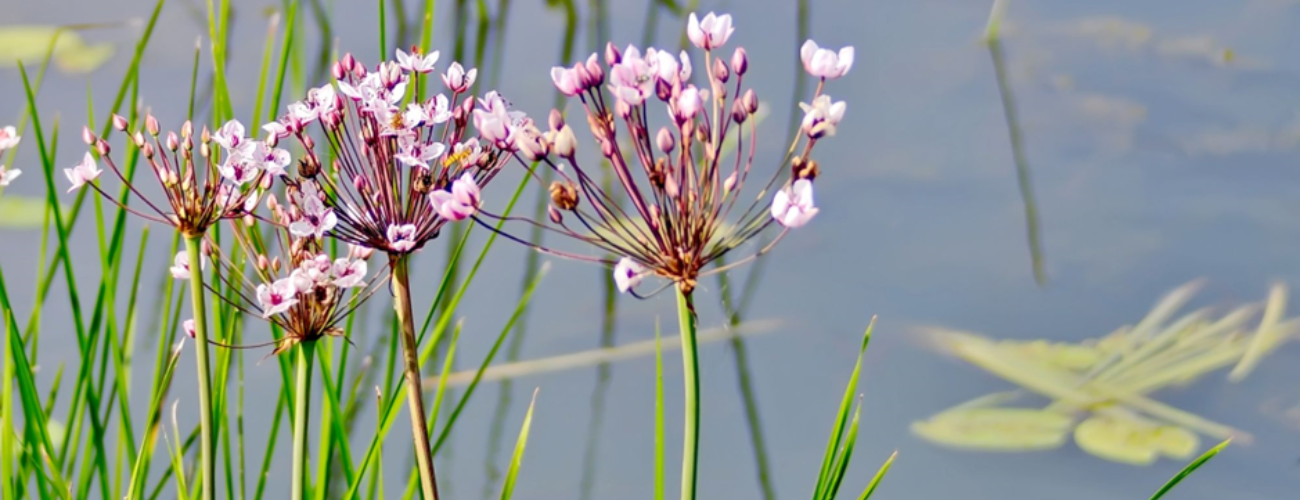
Butomus umbellatus, commonly known as flowering rush, is a tall plant that can grow up to 1.5 metes in height. It has long, narrow leaves and tall, slender stems that produces an umbel of pink flowers in mid-summer. It should be planted in water that is at least 20 cm deep but can tolerate water depths up to 1 metre.
Oxygenating plants
These plants are essential for maintaining the health and vitality of a pond. During daylight they absorb nutrients and CO2 from the water and release oxygen into it. They help to combat algae and blanket weed by competing for nutrients and creating shade. Some need to be planted or grown in aquatic baskets and some varieties are free floating. Oxygenators help keep pond water fresh. They also provide cover and habitats for aquatic creatures and spawning sites for amphibians.
Native examples include:
Ranunculus aquatilus (water crowfoot)
Hippuris vulgaris (marestail)
Hottonia palustris (water violet)
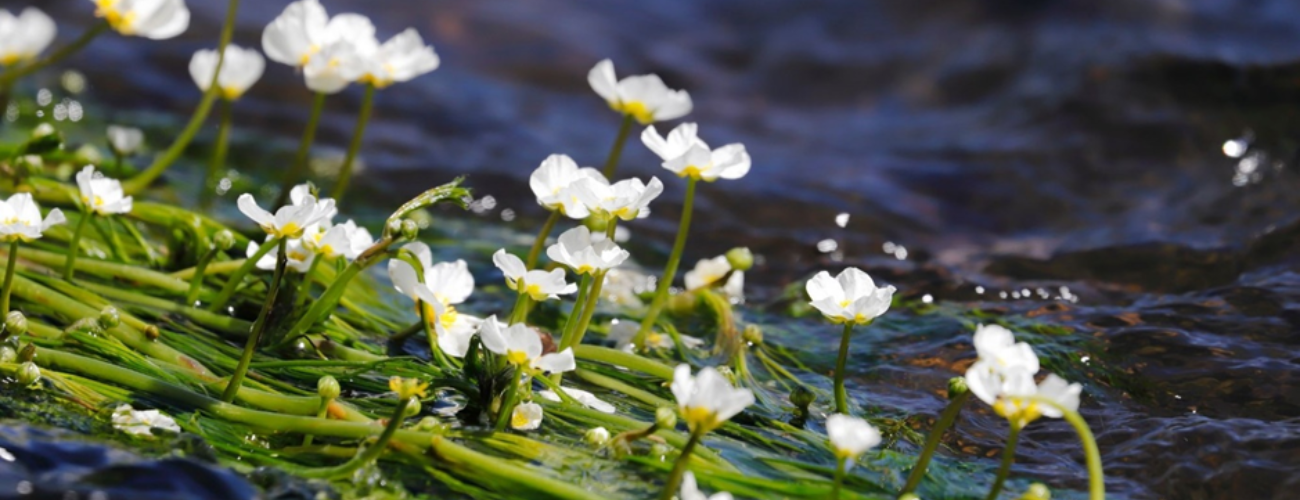
Ranunculus aquatilis, commonly known as water crowfoot, is a perennial with long, thin stems covered in delicate, feathery leaves. The plant produces small, white or yellow flowers that float on the water’s surface. Water crowfoot is an important plant for wildlife ponds, as it provides food and habitat for many aquatic animals. It is a popular plant for water gardens and is often used to create naturalistic planting schemes in ornamental ponds.
Spring is a great time to stock your pond for the coming season. As the water warms up and the days get longer the plants burst into growth and quickly establish themselves. All four Tates Garden Centres stock a wide range of pond plants from spring to autumn, including many native species. We have plants for ponds large or small, visit us in store to make your own selection or purchase one of our pond plant bundles online here. Our team will select three plants to create the perfect bundle for your pond.
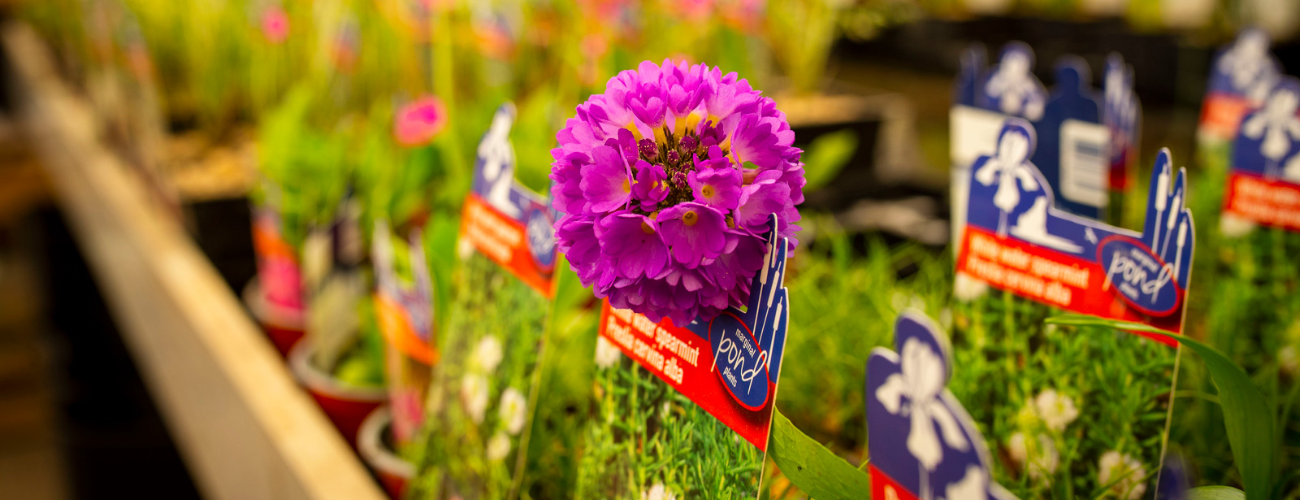
By our resident horticultural expert





